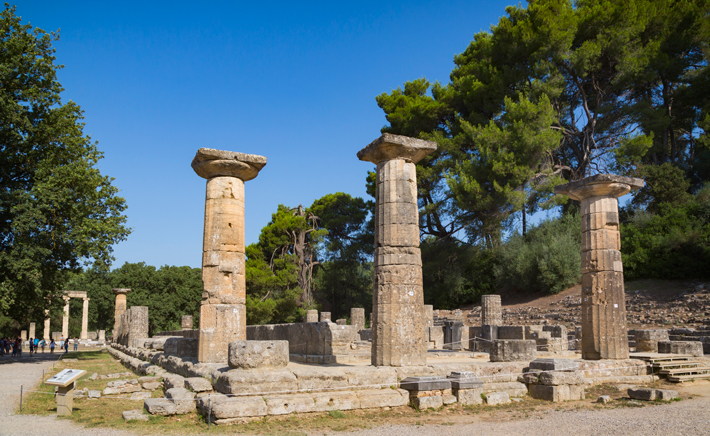Features
Worlds Within Us
By SAMIR S. PATEL
Monday, September 26, 2016
The largest ancient DNA laboratory in the United States sits behind a heavy steel door in a plain service hallway at the University of Oklahoma. Inside, researchers find, extract, isolate, and amplify DNA molecules and proteins, producing voluminous mounds of data that can address grand, complex questions about migration, diet, and human health—in the deep past and today. They’re probing the limits of new methodologies. They’re encountering the advantages and pitfalls of interdisciplinary science. And they’re writing the first drafts of a new chapter in archaeological research. But before they can do any of this, they have to ensure that the lab is scrupulously clean.
Next to the door, a red button, when pressed, produces a satisfying thump and turns off powerful UV lights inside. A series of pressure gauges climbs next to it. The lab’s six rooms are kept under positive pressure, double-sealed, and have their own air supply, filtered free of anything larger than 1,000 daltons—the mass of just 1,000 hydrogen atoms. People who enter must take off their shoes, change into scrubs, and, by the time they reach the two innermost rooms, don Tyvek suits, surgical masks, hairnets, and face shields. Those chambers are free of anything extraneous: Only sample vials and scientific equipment are visible. The DNA and proteins that the researchers work with there come from ancient microbes, and keeping the lab free of contamination is a tall order in a world that is positively swimming with their modern counterparts.

“Usually, ancient DNA work is performed in dungeon-like labs located in windowless basements,” says Christina Warinner, anthropologist and codirector of the Laboratories of Molecular Anthropology and Microbiome Research (LMAMR). This lab, however, is fitted with picture windows that face the atrium of the university’s Stephenson Research and Technology Center, so visitors can watch the scientists and students inside process microscopic genetic samples that can be centuries or even millennia old.
The microbes that are the focus of the LMAMR—from both ancient and modern sources, with separate lab facilities for each—come from what is known as the human microbiome, the myriad communities of bacteria (as well as eukaryotes, viruses, and archaea) that reside in and on our bodies. In only the last few years researchers have begun to understand that studying how the microbiome has shifted over thousands of years, particularly at moments of great change in human history, has the potential to reveal some of the ways in which how we eat, live, and move around the world have affected human biology. Any number of questions—medical, archaeological, demographic, evolutionary—that were unframeable just five years ago can now be asked and ultimately answered on scales ranging from molecular to continental.
Romans on the Bay of Naples
By MARCO MEROLA
Tuesday, August 30, 2016
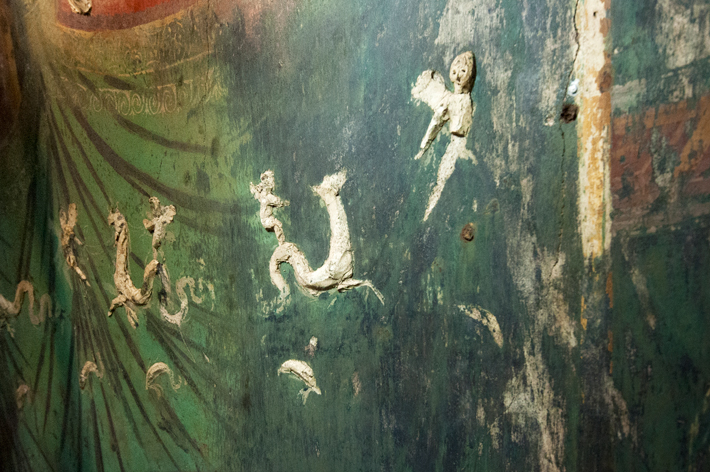
Once we reach the spot, you won’t believe your eyes,” says archaeologist Luciana Jacobelli of the University of Molise as she opens a small door to the crypt of the church of Santa Maria Assunta in the center of town. It’s very dim inside, and she has to use a flashlight as we make our way. We slowly climb down a series of ladders through a forest of iron scaffolding toward what seems to be the only well-lit area, nearly 30 feet under the church. Jacobelli then leads me into a room and, as promised, frescoes in dazzling green, yellow, red, and blue seem to illuminate the space on their own. We have arrived at the extraordinarily well-preserved remains of a lavish villa marittima, or seaside villa, once a luxurious retreat for the rich of ancient Rome to escape the summer heat and the hustle and bustle of city life in the first centuries B.C. and A.D.
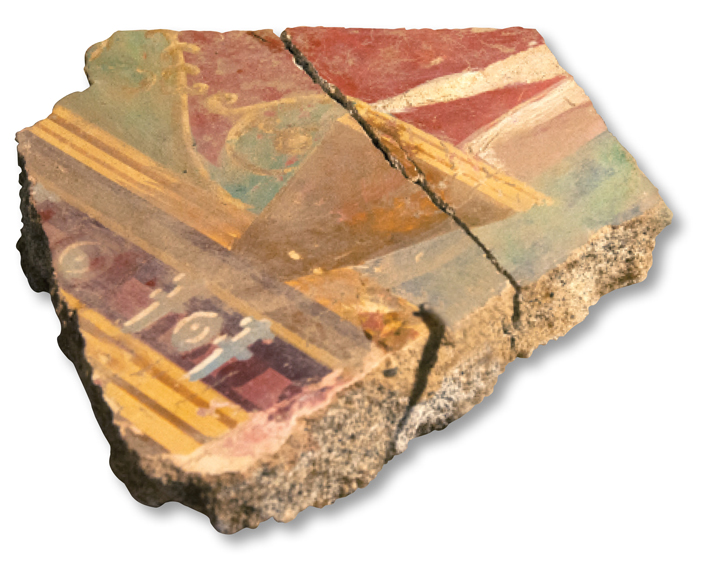 Swiss architect and engineer Karl Weber, the first scholar to supervise excavations of the areas destroyed by the eruption of Mount Vesuvius in A.D. 79, appears to have seen the villa on April 16, 1758, during his explorations. In his field report he writes that he had begun to dig near the “church with bell tower, not far from the beach that is at the base of Mount Santa Maria a Castelli and Mount Sant’Angelo; at a depth of 30 spans we found a famous ancient building whose first mosaic is made of white and fine marble.”
Swiss architect and engineer Karl Weber, the first scholar to supervise excavations of the areas destroyed by the eruption of Mount Vesuvius in A.D. 79, appears to have seen the villa on April 16, 1758, during his explorations. In his field report he writes that he had begun to dig near the “church with bell tower, not far from the beach that is at the base of Mount Santa Maria a Castelli and Mount Sant’Angelo; at a depth of 30 spans we found a famous ancient building whose first mosaic is made of white and fine marble.”
It was only during restoration work on the crypt in 2003 that archaeologists had a chance to enter the villa’s stunning triclinium, or dining room, for the first time. But after only three years of digging, they were forced to stop when funding ran out, and it wasn’t until the summer of 2015 that excavations resumed. For the rest of the year, before funding for the project ran out again, Jacobelli led a rescue excavation under the supervision of the local archaeological superintendent, Adele Campanelli, and archaeological supervisor Maria Antonietta Iannelli. A team of archaeologists and conservators worked to remove mud and lapilli (small stones ejected by a volcanic eruption) and to expose and clean the stunning wall paintings emerging from the debris.
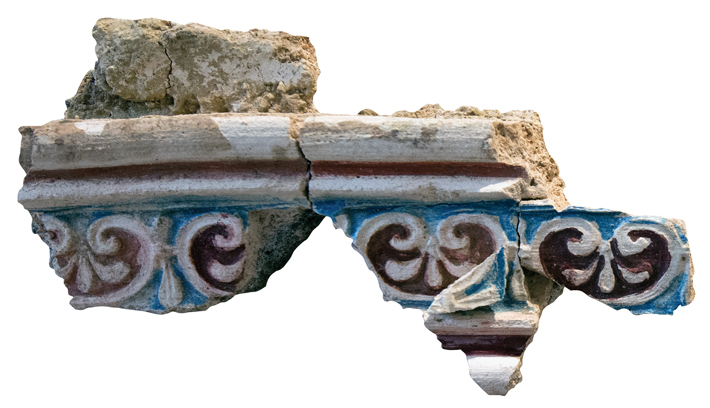
|
Slideshow:
|
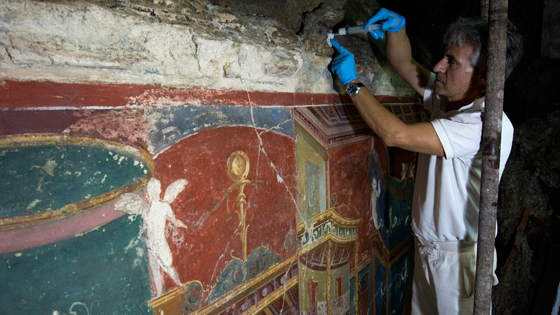
Roman Holiday
|
A New View of the Birthplace of the Olympics
By JARRETT A. LOBELL
Monday, August 15, 2016
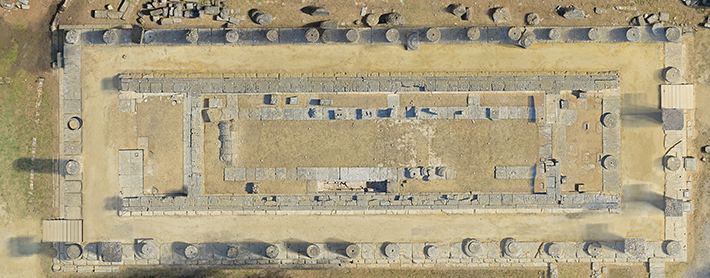
For a variety of field projects over the last decade, archaeologist Phil Sapirstein has lugged more than 20 pounds of high-tech laser imaging equipment around the Mediterranean gathering data to create 3-D models of ancient monuments. “I have been working on architectural history for quite a while,” says Sapirstein, who teaches at University of Nebraska-Lincoln, “and one of my main focuses has been the general problem of the origin of architectural styles, especially the Doric style, in the Archaic period [ca. 700–480 B.C.].”
More often than not, little remains of Archaic buildings. The mid-seventh-century B.C. Old Temple at Corinth, dedicated to the god Apollo, burned down and was replaced, obliterating most evidence of the original building. Other structures from the period were flawed due to the lack of experience with engineering and construction techniques needed for monumental stone architecture. The early temple of Hera on the island of Samos, for instance, which Sapirstein characterizes as an “experimental building,” didn’t survive because it subsided into the marshy land on which it was built. Further complicating the effort to identify these early buildings, the stone was often reused, obscuring its original context.
What does frequently survive, however, are the temples’ ceramic roof tiles. Sapirstein realized that these tiles, which are relatively abundant, were an underutilized source of information, especially when examined using 3-D imagery. “I started working with 3-D modeling software early on because you often have to reconstruct the roofing system from very tiny fragments,” explains Sapirstein. “With this software, I could see what the roofs actually would have looked like and how they functioned. It worked great.” But Sapirstein knew the technology was impractical, if not impossible, for most archaeologists to use. “You have to acquire a scanner, which takes some doing, and it’s really expensive,” he says. “You then have to know how to use it and how to process the models. It’s a huge investment.” Sapirstein wanted to find an alternative method—and for this he returned to one of the temples that started it all.
The temple of Hera at Olympia, or the Heraion, dates to around 600 B.C. and is one of the oldest surviving Greek stone Doric temples. In his Description of Greece, the second-century A.D. traveler Pausanias describes legendary events that, along with actual stylistic attributes of the Heraion, led Wilhelm Dörpfeld—a German archaeologist working in the late nineteenth and early twentieth centuries, and the scholar most closely associated with the structure—to date the original building to 1096 B.C. However, while there is evidence of ritual activity at Olympia dating back to the eleventh century B.C., there were no permanent large structures at this early date. And even when the Olympics first took place, probably well after the traditional date of 776 B.C., there were likely no sizeable buildings at the site.
Located in the north part of the Altis, Olympia’s sacred precinct, the Heraion is probably the site’s first monumental stone building. Dörpfeld dug trenches under the temple and found two structures he interpreted as predecessors. But scholars today no longer believe there were in fact any previous buildings on this spot, and that what Dörpfeld had actually uncovered was the Heraion’s foundation. “The Heraion is actually very well preserved,” says Sapirstein, “and doesn’t appear to have been significantly altered or renovated after its construction, despite its thousand-year history of use. It’s one of the very few of these early buildings we can date from stratigraphic and not just stylistic evidence.” The temple is also the first well-preserved peripteral Doric temple—that is, having columns completely surrounding it. “This is an important moment in Greek architecture,” says Sapirstein. “The fact that the Heraion’s columns are made of stone, which is expensive and labor intensive, signifies a major expansion of the investment the Greeks put into building a monumental structure.”
|
Slideshow:
|
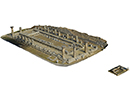
Olympia Slideshow
|
Advertisement
Also in this Issue:
Advertisement
IN THIS ISSUE
Features
A New View of the Birthplace of the Olympics
Romans on the Bay of Naples
Worlds Within Us
Letter from Rotterdam
From the Trenches
Piecing Together a Plan of Ancient Rome
Off the Grid
Gimme Middle Paleolithic Shelter
Zapotec Power Rites
Mystery Buildings at Petra
Sun and Moon
The Great Parallelogram
The Prisoners of Richmond Castle
A True Viking Saga
Culture Clash
Lost and Found (Again)
The City That Wasn’t
Mask Metamorphosis
Advertisement

Recent Issues
-
 May/June 2024
May/June 2024
-
 March/April 2024
March/April 2024
-
 January/February 2024
January/February 2024
-
 November/December 2023
November/December 2023
-
 September/October 2023
September/October 2023
-
 July/August 2023
July/August 2023
-
 May/June 2023
May/June 2023
-
 March/April 2023
March/April 2023
-
 January/February 2023
January/February 2023
-
 November/December 2022
November/December 2022
-
 September/October 2022
September/October 2022
-
 July/August 2022
July/August 2022
-
 May/June 2022
May/June 2022
-
 March/April 2022
March/April 2022
-
 January/February 2022
January/February 2022
-
 November/December 2021
November/December 2021
-
 September/October 2021
September/October 2021
-
 July/August 2021
July/August 2021
-
 May/June 2021
May/June 2021
-
 March/April 2021
March/April 2021
-
 January/February 2021
January/February 2021
-
 November/December 2020
November/December 2020
-
 September/October 2020
September/October 2020
-
 July/August 2020
July/August 2020
-
 May/June 2020
May/June 2020
-
 March/April 2020
March/April 2020
-
 January/February 2020
January/February 2020
-
 November/December 2019
November/December 2019
-
 September/October 2019
September/October 2019
-
 July/August 2019
July/August 2019
-
 May/June 2019
May/June 2019
-
 March/April 2019
March/April 2019
-
 January/February 2019
January/February 2019
-
 November/December 2018
November/December 2018
-
 September/October 2018
September/October 2018
-
 July/August 2018
July/August 2018
-
 May/June 2018
May/June 2018
-
 March/April 2018
March/April 2018
-
 January/February 2018
January/February 2018
-
 November/December 2017
November/December 2017
-
 September/October 2017
September/October 2017
-
 July/August 2017
July/August 2017
-
 May/June 2017
May/June 2017
-
 March/April 2017
March/April 2017
-
 January/February 2017
January/February 2017
-
 November/December 2016
November/December 2016
-
 September/October 2016
September/October 2016
-
 July/August 2016
July/August 2016
-
 May/June 2016
May/June 2016
-
 March/April 2016
March/April 2016
-
 January/February 2016
January/February 2016
-
 November/December 2015
November/December 2015
-
 September/October 2015
September/October 2015
-
 July/August 2015
July/August 2015
-
 May/June 2015
May/June 2015
-
 March/April 2015
March/April 2015
-
 January/February 2015
January/February 2015
-
 November/December 2014
November/December 2014
-
 September/October 2014
September/October 2014
-
 July/August 2014
July/August 2014
-
 May/June 2014
May/June 2014
-
 March/April 2014
March/April 2014
-
 January/February 2014
January/February 2014
-
 November/December 2013
November/December 2013
-
 September/October 2013
September/October 2013
-
 July/August 2013
July/August 2013
-
 May/June 2013
May/June 2013
-
 March/April 2013
March/April 2013
-
 January/February 2013
January/February 2013
-
 November/December 2012
November/December 2012
-
 September/October 2012
September/October 2012
-
 July/August 2012
July/August 2012
-
 May/June 2012
May/June 2012
-
 March/April 2012
March/April 2012
-
 January/February 2012
January/February 2012
-
 November/December 2011
November/December 2011
-
 September/October 2011
September/October 2011
-
 July/August 2011
July/August 2011
-
 May/June 2011
May/June 2011
-
 March/April 2011
March/April 2011
-
 January/February 2011
January/February 2011
Advertisement





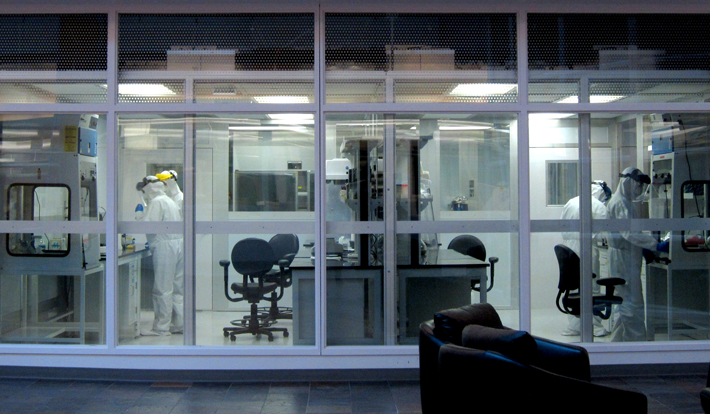
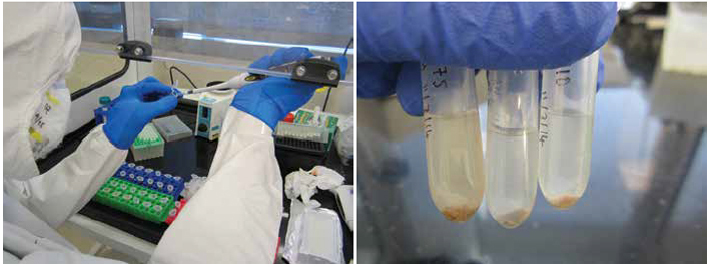
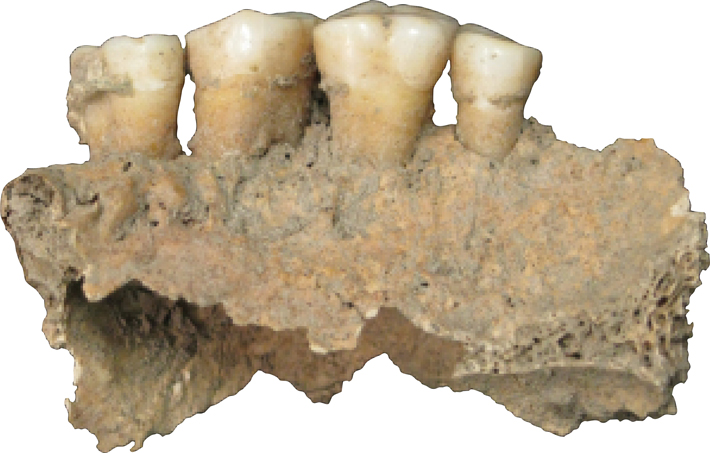 Warinner and her coauthors—32 in total from a broad range of disciplines—catalogued, from the mouths of four medieval individuals, 40 opportunistic pathogens, including species associated with cardiovascular disease, meningitis, and pneumonia, as well as what might be the oral ancestor of modern gonorrhea. They sequenced the entire genome of Tannarella forsythia, a cause of periodontal disease. They saw dietary DNA from pigs, cruciferous vegetables, and bread wheat. They looked for proteins as well, and found ones associated with pathogen virulence, others produced by the human immune system, and beta-lactoglobulin, a durable dairy protein. Among the genes identified, oddly, are ones associated with microbial antibiotic resistance—hundreds of years before the advent of antibiotic drugs. The expert on the subject for the study, Lars Hansen of Aarhus University in Denmark, says that the cellular machinery that creates antibiotic resistance can serve other purposes in cells. The modern phenomenon, he explains, comes from increased availability and expression of these existing mechanisms. “It is the first time [antibiotic resistance sequences] have been found in an ancient human-associated context,” says Hansen. “It shows that these building blocks are basically everywhere.”
Warinner and her coauthors—32 in total from a broad range of disciplines—catalogued, from the mouths of four medieval individuals, 40 opportunistic pathogens, including species associated with cardiovascular disease, meningitis, and pneumonia, as well as what might be the oral ancestor of modern gonorrhea. They sequenced the entire genome of Tannarella forsythia, a cause of periodontal disease. They saw dietary DNA from pigs, cruciferous vegetables, and bread wheat. They looked for proteins as well, and found ones associated with pathogen virulence, others produced by the human immune system, and beta-lactoglobulin, a durable dairy protein. Among the genes identified, oddly, are ones associated with microbial antibiotic resistance—hundreds of years before the advent of antibiotic drugs. The expert on the subject for the study, Lars Hansen of Aarhus University in Denmark, says that the cellular machinery that creates antibiotic resistance can serve other purposes in cells. The modern phenomenon, he explains, comes from increased availability and expression of these existing mechanisms. “It is the first time [antibiotic resistance sequences] have been found in an ancient human-associated context,” says Hansen. “It shows that these building blocks are basically everywhere.”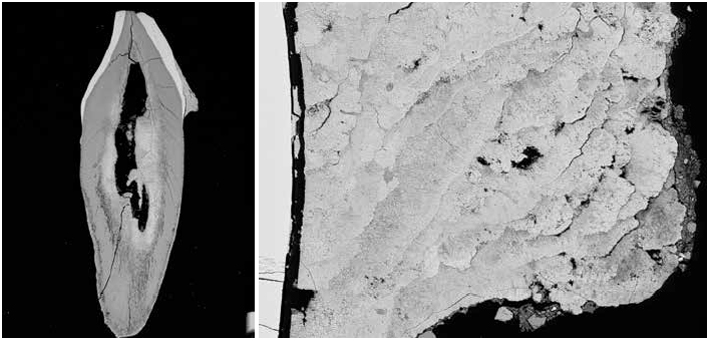
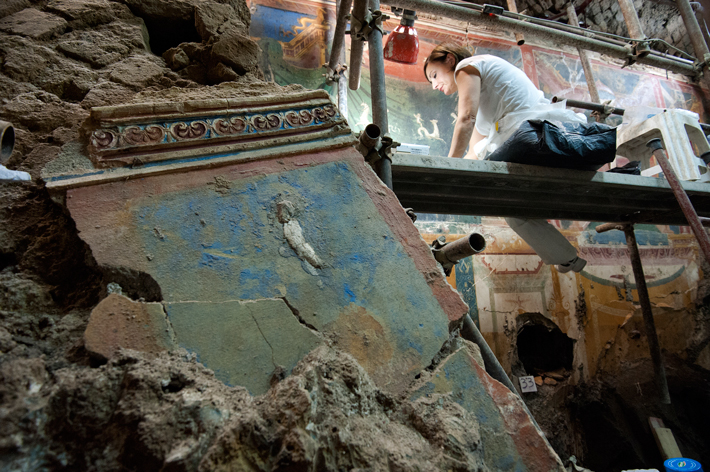
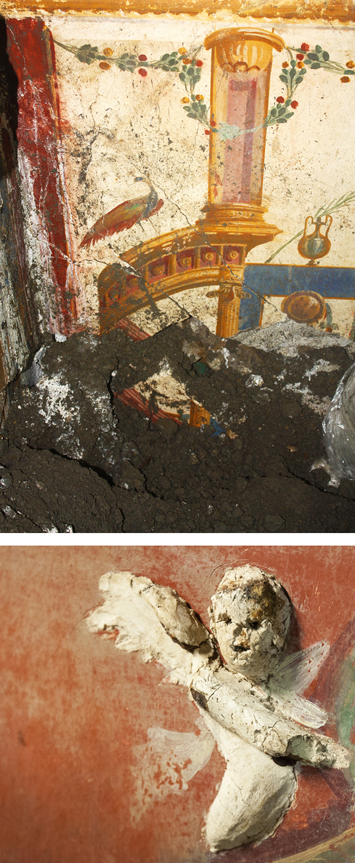 Thanks to an ancient system of artificial terraces cut into the hillside on which Positano sits, the villa may have sprawled across more than 2.25 acres. Some scholars think that it might even have been as large as the town of Positano. Mantha Zarmakoupi of the University of Birmingham, an expert on the ancient Roman luxury villas of the Bay of Naples, disagrees. “I can imagine that the villa was perched on a terraced platform with ramps leading to other terraces below, and may have stretched over two or more levels in the hillside, as houses do today, but I don’t think that it would have occupied the entire village,” she says.What isn’t in doubt, however, is the excellence of the frescoes covering the villa’s walls. “The quality of the wall paintings is very high, and the triclinium’s decorative program seems unique,” says Zarmakoupi. “The combination of frescoes with stucco is rare and remarkable. The rendering of details in stucco, for example in the figures both holding and decorating the drapery, accentuates the feeling that the cloth is actually pliable.”
Thanks to an ancient system of artificial terraces cut into the hillside on which Positano sits, the villa may have sprawled across more than 2.25 acres. Some scholars think that it might even have been as large as the town of Positano. Mantha Zarmakoupi of the University of Birmingham, an expert on the ancient Roman luxury villas of the Bay of Naples, disagrees. “I can imagine that the villa was perched on a terraced platform with ramps leading to other terraces below, and may have stretched over two or more levels in the hillside, as houses do today, but I don’t think that it would have occupied the entire village,” she says.What isn’t in doubt, however, is the excellence of the frescoes covering the villa’s walls. “The quality of the wall paintings is very high, and the triclinium’s decorative program seems unique,” says Zarmakoupi. “The combination of frescoes with stucco is rare and remarkable. The rendering of details in stucco, for example in the figures both holding and decorating the drapery, accentuates the feeling that the cloth is actually pliable.”